 As any good prepper, or normal adult should do, I spend a great deal of time reading. Sometimes I read physics books (yes, I like that stuff), sometimes philosophy books, sometimes Special Forces or CIA operations books and sometimes fantasy books. Those books I read for fun, to get my mind off things and escape for a while. Other than the SF/CIA type of books, I don’t really learn anything practical, and even those only give me a broad sweep of useful knowledge.
As any good prepper, or normal adult should do, I spend a great deal of time reading. Sometimes I read physics books (yes, I like that stuff), sometimes philosophy books, sometimes Special Forces or CIA operations books and sometimes fantasy books. Those books I read for fun, to get my mind off things and escape for a while. Other than the SF/CIA type of books, I don’t really learn anything practical, and even those only give me a broad sweep of useful knowledge.
Occasionally though, I read books that I can put to real use.
Survival books like the SAS Survival Manual are always good to read because as many of them as I’ve read and as many survival classes as I’ve gone to, I always either pick up something new or remember something long forgotten.
This time, I read Surviving Doomsday by Richard Duarte. It also comes in a Kindle edition. It has some pretty good reviews (listed pretty much live at the bottom of this article. At the time I’m writing this sentence (and sipping on my tea) it had only one bad review and after looking at what that guy’s beef was, I’d have to say I pretty much discount it. His whole complaint was that all the articles were written in groups a few days from each other and the reviewers had written few other reviews so they must be fake.
I did take a look at the reviews and they weren’t posted that way actually, and considering the narrow focus of a prepping book vs a survival or love story, I don’t see that having reviews from people who haven’t written many others as a bad thing. Considering it’s his first book, his name isn’t going to be known by everyone yet so as you’d expect, there are going to be people who were in his immediate circle who wrote a review.
Well, I’m not in his immediate circle, or even his intermediate circle. And I’m going to write a review.
I first read his ‘About the Author’ section. Looking solely at that, I didn’t get any kind of warm or cold fuzzy as to who this guy is. The only thing I did get from it is that he’s most likely a more level-headed kind of prepper from his statement, “I don’t live in an undergroun bunker, and I’m not preparing for a zombie apocalypse; well maybe I’m preparing a little, just in case.” So that’s a good start. He doesn’t mention it here but he’s a lawyer.
The book starts out with explaining how he started out – by going through a disaster with his family and being ill-prepared. That’s as good a place as any to start prepping. Not as good as going through a disaster after you’ve prepared but it’s hard to beat his way as far as a learning experience.
I do like that he mentions his goals for the book in this section. Always a good thing for a non-fiction book and something that some people don’t do:
- To readjust your mindset, and to encourage you to take responsibility for yourself and your family.
- To provide you with some of the resources, information and tools you need to start making preparations at your own pace, and within your own abilities and budget.
- To make it easy and painless as possible for you to get started.
For some reason, the first two chapters are numbered 01 and 02 but the rest are numbered 3,4,5 etc. Not sure why that is. Could be an over site. Nothing I’m too concerned with.
Chapter 01
In chapter 01, he goes through a short background of some of the reasons why people need to be prepared and what happens when they’re not. The biggest takeaway I got from that section is that a hundred years ago, people didn’t expect government help to come when disaster struck. They banded together and did things on their own. Today’s society is so dependent on the government that they can’t take care of their bare essentials to life without it. I whole-heartedly agree.
Chapter 02
Chapter 02 talks about urban survival but with the information given, it’s pretty much an extension of chapter 01. I would have written them as one chapter but I can see where he was going with it. For the target audience, they aren’t gonna give a crap if it was one or two chapters.
One thing that threw me for a second is that starting with this chapter, he has a bulleted list called “In This Chapter.” The generalities of the chapters do include the information that’s in the lists but when I see a bulleted list, I usually expect the information following to be broken down into segments that way. It very well may be that way as the paragraphs flow but you won’t see subparagraphs. Again, just a writing method difference and nothing a prepper is going to care about.
Chapter 3
Chapter 3 is all about water. He first goes into some details about why water is important and why you need to be worried about it. Then he breaks down information into several bullet points. I do like the bullet points here because it gives people bite-sized tidbits of information and suggestions. He hits pretty much every point that I would given his focus. You could write an entire book on pretty much every chapter in his book but he gets the important points.
Chapter 4
Chapter 4 is food. He explains about the food supply chain being disrupted and the fact that stores only carry about 72 hours-worth of food. Also, I’m glad that he mentions that this doesn’t mean that there’ll be food for 72 hours – a slight point that people usually miss. As soon as people start hearing a catastrophe is coming (or as he calls, a Worst Case Scenario – WCS), those shelves will be bare. They’ll empty out as fast as the stock can be brought up from the back room.
I like the list of foods that he suggests. The only big thing that I think I would have added to the list would have been alcohol. Alcohol may not be a great survival food in itself but it can be used to clean wounds and for barter in a longer-term emergency. Also, I certainly wouldn’t mind a couple drinks here and there if I’m gonna be stuck in my house for weeks on end.
Chapter 5
Chapter 5 is first aid. Good chapter here. I noticed that he didn’t mention learning about and stocking veterinary medication like antibiotics. That may be because his book is geared toward short-term scenarios and not long-term TEOTWAWKI (The End Of The World As We Know It) – or the fact that he’s a lawyer and doesn’t want to be subject to our ridiculous tort system of laws in case some idiot pretends he’s a doctor when he’s not based on some sentences in a book.
Chapter 6
Chapter 6 is personal security. Mr Duarte isn’t s self-defense expert but he’s seen first-hand what happens when society collapses, even for just a few weeks. This particular topic is one I know pretty well and he has some good, basic information in this chapter. In fact, I think it’s the most well-thought-out chapters of the whole book. In any discussion about which weapon is best, there will always be a debate so no reason to get into any of that. His information is accurate and fact-based.
The only point I think he may have missed (or I somehow missed it) is that if you decide that you’re going to use a weapon as part of your plan, especially a firearm, you really have to sit down and decide if you’ll actually take a life. If not, and the bad guy calls your bluff, you now just armed him. If you don’t agree that your family should be a part of your weapons plan, take a look at this article (one of many) about a 15-year-old who uses his dad’s AR-15 to protect his 12-year-old sister after two thugs broke into their home.
I do like that he goes into several pages of how not to set yourself up to be in a situation that you need to defend yourself. That’s ALWAYS the best option. I learned this one in Northern Uganda. If you find yourself in a fight that you didn’t plan – you didn’t plan very well.
What I would have liked to have seen is some specific examples of what happened to his family or his neighborhood as a result of good or bad self-defense actions during his experiences.
Chapter 7
Chapter 7 is essentially bugging in vs bugging out. I like his balance of the two. Whenever possible, you should bug in because it’s almost always the safest move and a LOT easier to have supplies that you’ll need. If you don’t have any plan to bug out though, you’re making a big mistake.
He has a pretty good list of items that he suggests to carry as a part of a bugout bag kit. The only thing I’d suggest to stress more is communication. He suggests having a pre-paid calling card, which is a good suggestion, but that requires that phone service will be functioning. I would have added some kind of radios to talk with each other (since you may not be within earshot of every member in your group at every moment) and some way to signal for rescue. Basically, just a bit more in signaling and communication. The rest is a good list to start with and flexible enough that people should be able to figure out what they need.
I also like his mention of a Get Home Bag (GHB). You should have the equivalent of a bugout bag in places where you’re likely to be if a disaster strikes, such as your office.
Chapter 8
Chapter 8 is hygiene and sanitation. This is a chapter that not everyone thinks about. Good information here but as above, I would have liked to have seen some real-life examples of what happened to his family and his neighborhood regarding hygiene and sanitation and how they dealt with it.
Chapter 9
Chapter 9 is about physical and mental conditioning. Some decent information here about physical conditioning. I would have added a bit more about the mental conditioning such as learning yoga or meditation as actual steps to deal with stress but I don’t see anything negative about the chapter.
Chapter 10
Chapter 10 is a very good idea, and one that I wish more people would do. He suggests that you should do a 24-hour experiment where you shut off the power and water in your home and not use your sewer system. You can’t use anything that isn’t already in your home. It’s a great suggestion. You should definitely be doing this.
Chapter 11
Chapter 11 is about having tools available to fix things. Very good suggestion. I’d add that you should also have some kind of maintenance manuals for things that you may end up needing to fix, if available, such as for your generator or car, in addition to spare parts.
Chapter 12
Chapter 12 is basically a big list of things you should consider getting. Nothing wrong with lists. Easy to understand and people like to read them.
Appendix A
Appendix A is a 21-day thought experiment to compare and contrast a scenario where someone isn’t prepared for a disaster (I won’t spoil the fun and tell you the details) with someone who is.
After that is a glossary and a list of some suggested reading, followed by the ‘About the Author’ page I mentioned.
My Take
Overall, I think this book is well-worth buying if you’re a beginning prepper or would just like to see information from the viewpoint of someone who’s lived through it. It has some very useful information and it’s presented in an easy-to-understand way. Any negatives that I found are pretty much minor details to the level that it would be pretty much impossible to avoid without writing a 5,000-page tome. I only wish the author would have added more real-life experience inside the chapters so we could gain even more benefit from what he went through because that’s where his authority comes from. Even with that considered, it’s still a good book as it stands and I recommend it.
As I mentioned above, here are the current Amazon reviews for the book, which should be up-to-date pretty much as soon as you loaded this page:


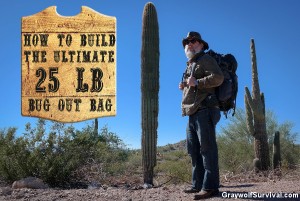

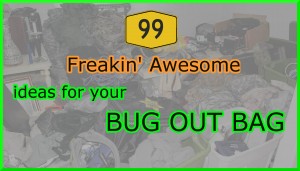
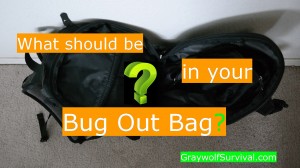
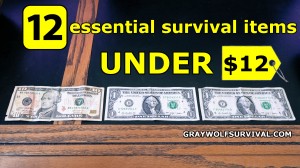
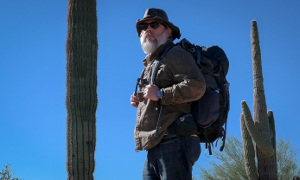
Speak Your Mind